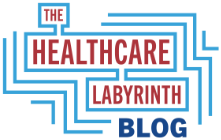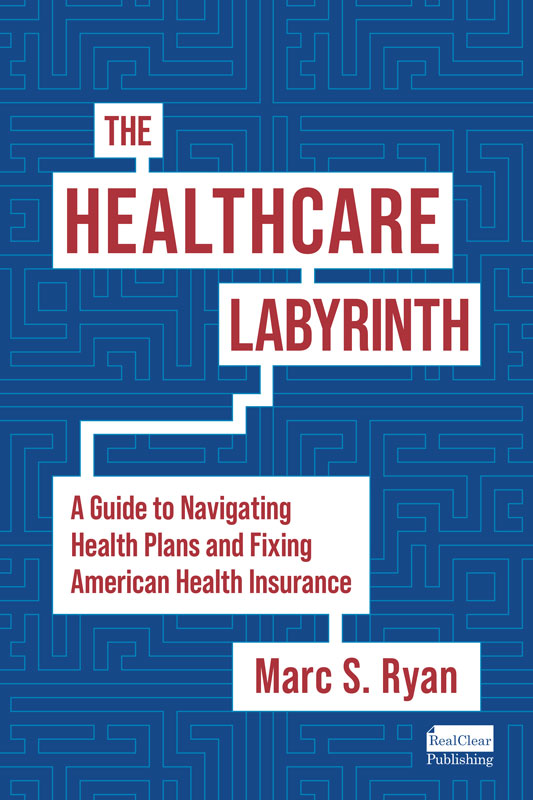It is time for my annual Medicare Advantage (MA) enrollment growth assessment. I usually write this in mid-January after we receive the results of the MA open enrollment season that ends on December 7 of the prior year. As I say, MA is the place to be in terms of revenue and margin opportunity. Here is this year’s assessment. I will be adding to this over the next few months as enrollment continues to increase.
While some MA health plans are singing the blues after a lackluster MA enrollment season, my analysis of January 2023 to January 2024 growth shows there is reason for the industry to cheer overall. And some of the MA plans reporting disappointing growth in enrollment season actually did quite well throughout 2023.
The MA enrollment big picture
A few key points before we go into the year-over-year statistics:
- As the first chart below shows, MA has grown explosively this decade. Enrollment is now up 9.54 million lives since January 2020, an almost 40% growth in four years. As of January 2024, enrollment in MA is 33.473 million.
- As can be seen, MA has hit the critical benchmark of enrolling over 50% of Medicare beneficiaries. This is earlier than both public and private estimates predicted. Enrollment penetration of MA grew almost one-third in four years.
- Enrollment growth in both raw numbers and percentages slipped from January 2022 to January 2023. But the January 2023 to January 2024 numbers show a great rebound in both numbers and percentage growth. This was unexpected by many analysts, including me. Overall, many of us projected and additional slowdown given overall penetration increases since 2020, the changing risk profile in MA, and lower rates and poor Star scores that meant a partial pullback on some supplemental benefits. MA is becoming highly penetrated in some large metropolitan areas, which tends to restrict net growth there. MA plans are relying more on suburban and some rural areas for growth through Preferred Provider Organization (PPO) products. We will discuss the growth of MA Health Maintenance Organization (HMO) and PPO products nationwide later.

Why is Medicare Advantage (MA) attractive?
As I say often in my blogs and podcasts, MA has huge advantages over traditional FFS and thus has major appeal to Medicare beneficiaries. Despite some criticism, often generated by political critics and providers, members are highly satisfied with MA and the supplemental benefits and out-of-pocket protections it provides.
Despite some lower rate increases of late, MA plans are able to increase benefits and make products appealing for a few reasons:
- MA rate-setting largely is based on the antiquated and inefficient fee-for-service (FFS) program’s costs. This allows plans to deliver base services far more efficiently and pass savings on to members in additional benefits above and beyond FFS. These savings are mandated to be passed through to member benefits. Plans do a variety of things with the money:
- Reduce traditional program cost-sharing
- Fill in huge FFS program benefit gaps (such as high costs of the inpatient benefit and the cap on covered days) that often bankrupt seniors and the disabled.
- Add numerous supplemental benefits not found in FFS.
- The Star quality bonus program rewards high-performing plans with additional revenue to augment benefits even more.
- MA plans are improving outcomes (where FFS is failing miserably) and providing critical services, such as case and disease management.
The combination of the benefits and quality focus makes for a great value proposition. MA has become one of the greatest social safety nets for lower- and lower middle-income seniors. It can mean hundreds and sometimes thousands of dollars a year in additional support to fixed-income Americans. The value proposition means members flock to MA. And savvy Medicare beneficiaries are also moving to the highest-performing plans from lesser rated ones to get added benefits and more quality.
Analysis approach and parameters
What did I do? I analyzed the January 2023 and January 2024 enrollment spreadsheets posted by the Centers for Medicare and Medicaid Services (CMS). I looked at all MA enrollment. A word of caution: while the enrollment season ended on December 7, 2023, enrollment will continue to increase in the next several months. Some may have signed up too late for January 1 enrollment. There also is an additional enrollment period for some enrollees that occurs from January 1 to March 31. Given ongoing marketing by plans, this tends to increase MA numbers in the first quarter.
To derive enrollment trends in MA, I focused my analysis on overall MA membership growth as well as big national plans and select prominent startups (some of them “insurtechs”).
The plans reviewed were:
Big National Plans:
- United Healthcare
- Humana
- CVS Health’s Aetna
- Elevance Health
- Kaiser Health Plans
- Centene
- Cigna
- Health Care Services Corporation (HCSC)
- Molina Healthcare
Prominent Startup Plans:
- Alignment Healthcare
- Bright Health
- Clover Health
- Devoted Health
I did not look at standalone Part D plans, but at the following types of MA plans (broadly speaking):
- Local Health Maintenance Organizations Plans (HMOs)
- Local HMO Point of Service Plans (POS)
- Local Preferred Provider Organization Plans (PPOs)
- Regional PPO Plans
- Medicare-Medicaid Plan HMOs (being phased out by 2026)
- Private Fee for Service Plans (PFFS)
- 1833 and 1876 Cost Plans
- Medicare Medical Savings Account Plans (MSAs)
- Program of All Inclusive Care for the Elderly Programs (PACE)
Medicare Advantage enrollment growth main findings
The table below provides details and here is an overview of the findings:
- MA membership grew from 30.799 million in January 2023 to 33.473 million in January 2024, an increase of 2.674 million year over year. The year-over-year (2023 to 2024) percentage increase was 8.68%, up from 6.12% (2022 to 2023).
- Big Plan MA enrollment rose from 23.456 million in January 2023 to 25.568 million in January 2024, an increase of 2.111 million or 9%.
- Big Plan MA enrollment represented about 76.16% of all MA enrollment in January 2023 and is about 76.38% as of January 2024, up slightly. Big Plan MA is just under 3% of all sponsoring organizations. About 78.95 percent of growth from January 2023 to January 2024 was captured by Big MA plans, down from 86.27 from January 2022 to January 2023.
The Big MA players
- UnitedHealthcare has consistently outperformed other national players over the years. Year over year United banked the biggest gain in membership overall, almost 802K members, and a great 9.18% growth. But it did not fare well during the enrollment season for 2024. Most of its gains occurred from January to October 2023 – about 613K members. It gained about 189K in the enrollment season. Still, its marketing and branding agreement with AARP continues to pay huge dividends.
- Humana had a similar story year over year. It had a impressive growth, adding about 635K members, or 11.70%. But as with United, most of its growth came between January and October 2023, about 492K. About 143K came in the enrollment season.
- Aetna, part of CVS Health, did tremendously well. It gained 772K lives from January 2023 to January 2024, a 24.51% gain. About 257K enrolled from January to October 2023. A whopping rough 515K joined during the eight-week enrollment season.
- After a good 2022 to 2023, Elevance Health remained basically flat from 2023 to 2024, losing about 10,000 lives.
- Kaiser too did poorly, gaining just 50K lives or 2.74%.
- In the case of Centene, given financial performance issues in the MA line and low Star scores, the company indicated it was strategically shedding some lives in 2023 and into 2024. That is what happened, with a decline in membership of about 232K or 16.76%. About 77K member lives were lost between January and October 2023. About 156K lives were shed in the enrollment season.
- Cigna grew by 7.57% or about 42K year over year.
- HCSC had a second good year in a row as it began its campaign to grow in MA. It had a 36.66% or 45,008 member increase from 2022 to 2023. It performed roughly the same from 2023 to 2024 – about 50,000 or 29.71%.
- Molina did not grow much at all year over year (about 2,000 lives and 1%). But it has bought Bright Health’s approximate 109K lives effective early this year. These numbers will roll into the Molina count.

The rest
- The prominent startups had two standouts in terms of growth from January 2023 to January 2024 – Alignment Healthcare (about 57K or 65.48%) and Devoted Health (about 86K or 74.36%). Still, the prominent startups have just 1.60% of all MA lives.
- Non-Big MA plan enrollment (including the prominent startups) grew at a healthy pace year over year as well – about 563K or 7.67%. Non-Big MA enrollment dropped slightly to 23.62% of all MA enrollment.
How did SNPs do?
- Special Needs Plans (SNPs) (including MMPs) continued to see a huge increase in enrollment. From January 2023 to January 2024, SNPs grew to 6.908 million, a gain of 1.154 million or 20.07%. SNPs usually are HMOs, but there are some L-PPOs. The vast majority of enrollees are in dual eligible SNPs (D-SNPs).
Benefit packages
- Given some concern about financial performance and growing risk, the number of Plan Benefit Packages (PBPs or what you would think of as a benefit plan) dropped from 7,347 to 7,264, or 83 PBPs lost for a contraction of 1.13%. The number of sponsors or parent organizations remained about the same, dropping by one to 305.
HMOs vs. PPOs
- Let’s look at the products that grew the most. I often talk about the surge of PPOs for a number of reasons – the move of MA into more rural and suburban areas as well as more middle-income and wealthier people joining MA. Over the years, PPOs began growing and competing well with HMOs in terms of raw numbers as well as percentage growth. Now, PPOs have taken over. HMOs grew year over year about 853K to18.763 million in January 2024. It still has the most enrollment, but HMOs grew by just 4.76%. On the other hand, PPOs grew 1.861 million to 14.398M in January 2024. PPOs grew 14.84%.
- The popularity of PPOs can be seen with PBP growth. For 2023, MA plans created 148 more HMO PBPs and 300 more PPO PBPs. For 2024, the number of HMO PBPs contracted by 172. But PPO PBPs still grew by 65.
Conclusion
In sum, aging, reasonable reimbursement (rate-setting and Star bonuses), and an old and tired traditional FFS system as a competitor makes MA the place to be for insurers. Plans continue to make robust investments. But there is no doubt that, while the overall numbers are good, lower rate increases and poor Star performance are impacting some MA plans’ ability to grow and compete. This is the case for plans that are big, medium, and small. The continued domination of the largest plans can limit the success of other plans.
#medicareadvantage #enrollment #medicare #coverage #stars
— Marc S. Ryan





